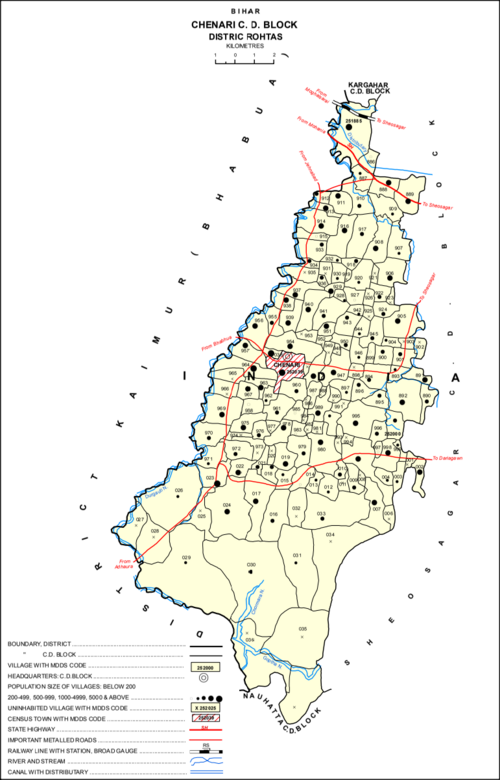
Chenāri or Chanāri is a census town and corresponding community development block in Rohtas district of Bihar, India. As of 2011, the town of Chenari had a population of 6,569, while Chenari block had a population of 131,528. Major commodities produced in the town of Chenari are chironji, rice, and pulses. The census town of Bhardua is administratively counted as part of Chenari block. Geography---------------- Most of Chenari block lies on the Rohtas plateau, a hilly region that forms an eastern flank of the Vindhya Range. In some parts of the block, the terrain is rugged enough to preclude any large-scale irrigation projects. The town of Chenari covers an area of 2.5 square kilometres, while the block as a whole covers an area of 190.5201 square kilometres.
Chenāri or Chanāri is a census town and corresponding community development block in Rohtas district of Bihar, India.
Chenāri or Chanāri is a census town and corresponding community development block in Rohtas district of Bihar, India.
The remaining 20.02% were classified as other workers. In the town of Chenari itself, however, the majority of workers were engaged in non-agricultural work. Cultivators formed 3.95% of the workforce, agricultural labourers formed 3.08%, household industry workers formed 20.95%, and other workers formed the remaining 72.01%. The proportion of household industry workers in the town of Chenari was the highest among urban centres in Rohtas district, and the proportion of agricultural labourers was the lowest.[2]
Ngar Panchayat Chenari





